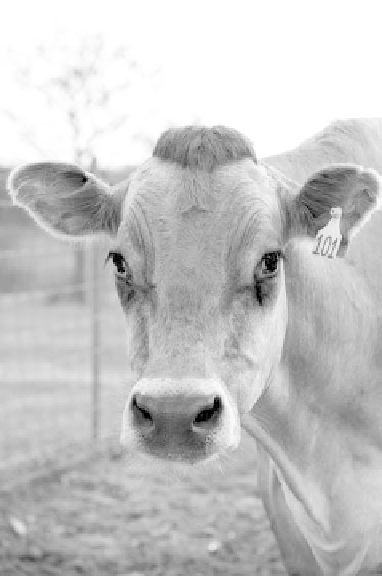Agriculture Reference
In-Depth Information
Transgenic mice are widely used in all types of medical research. A glance at the
Induced Mutant database
16
shows over 320 strains of transgenic mice. With the wide
use of transgenic animals in the medical field, it may seem surprising to find that, in
contrast to plants, relatively few transgenic animals have been developed to benefit pro-
ducers. We will review a few transgenic animals that may someday contribute to
increased, or better, production for farmers.
The most numerous farm animal, the chicken, has been the subject of transgenic
efforts, again for medical purposes. Since chicken eggs are used to produce many
human vaccines, efforts have concentrated on developing transgenic chickens that
produce proteins in eggs. To date, none have been marketed. There appear to be
few, if any, transgenic chickens under development for production purposes.
Cattle have received more attention for transgenic modification of production
factors. A major problem with many milk-producing mammals, especially cows, is
mastitis. Mastitis is an infection of the udders, usually by Staphylococcus aureus.If
untreated, it causes decreased milk production, damage to the mammary glands, and
contamination of the milk produced. Normal treatment consists of injecting antibiotics
into the udder and partial immunization by vaccines. These treatments inevitably pass
some proteins into the milk. A transgenic Jersey cow (GEM) has been developed that
secretes a specific protein, lysostaphin, to kill S. aureus.
17
This is not an antibiotic pro-
duced by fungi but a naturally occurring protein. The cow, shown in Figure 12.15, did
not develop mastitis compared to 71 percent of test animals infected with S. aureus.
17
Figure
12.15.
GEM, a transgenic cow. (Photo courtesy of U.S. Department of Agriculture.)









